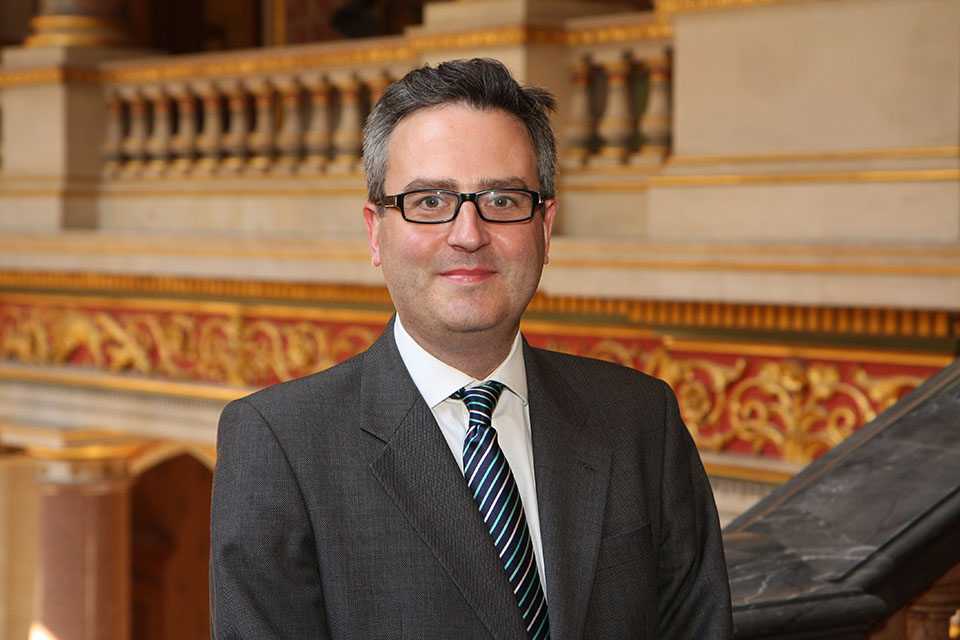Integrating East Africa: progress, challenges and future prospects.
Remarks by British High Commissioner, Nic Hailey, at Trade and Development Symposium - Nairobi 2015

Thank you to TradeMark East Africa for hosting us today.
This country may well be the place that trade began. Two million years ago, early humans were transporting stones 12 kilometres to a site in what is now Kanjera, in western Kenya, where they were fashioned into various kinds of tool. It is hard to imagine that this didn’t involve what we would recognize as trade in goods – the stones – and in services, such as splitting, sharpening and carving – all for the mutual benefit of what must have been several communities, spread across the catchment area of this early workshop.
The agenda for MC10 this week would I’m sure have rather baffled our early ancestors. But our objectives have remained the same: to expand our trade for our mutual benefit. As Adam Smith put it, “every man lives by exchanging”.
We all join in congratulating Kenya on hosting this week’s WTO Ministerial Conference, the first in Africa. It is a big opportunity to “live by exchanging” and to promote sustainable growth and development for all of us. And I think it is fair to say that TradeMark East Africa occupies something of an exemplary role at the heart of all of this.
Most of you will know its history. Founded by the UK in 2009, TMEA now counts seven more partners. I pay tribute to all of them – Belgium, Canada, Denmark, Sweden, Finland, the Netherlands and the United States – and to the energetic and committed team at TMEA itself, who have taken it from strength to strength.
Together, we’ve raised almost $700 million for TMEA, around 70% from the UK’s aid programme and the rest from partners. I’m proud to say that makes TMEA the biggest aid for trade project anywhere in the world.
But we should judge it not by what we have all put in, but by what we – or rather, what East Africa – has got out of it.
The results are truly impressive. TMEA’s support for the modernization of ports in Mombasa and Dar, and its one-stop border posts, are transforming trade and driving integration across the region. The time it takes to move goods from Mombasa to Kampala has been halved, to six days. A container now moves through the port of Mombasa in less than four days – it took more than 15 only a few years ago.
We have raised significant funding to develop the port in Dar. And by the end of next year, the programme will have helped increase East Africa’s exports by at least 10%.
There’s plenty more to do, of course. We will continue to stand with and support TMEA and its crucial work, in close collaboration with the governments of the region, with the World Bank/IFC, the ADB, and others. I know we will see it going from strength to strength.
Ladies and Gentlemen,
Let me make a few points about what else is at stake this week and why it matters to us here in Kenya and in East Africa. We see East Africa as an important contributor to global economic growth. The scale of what is possible here, harnessing this region’s skills, resources and technologies, is truly exciting.
Foreign investment into sub-Saharan Africa grew last year, despite a difficult global climate. Diaspora investment in business is growing too, binding our economies together more closely still. I know from the businesspeople I met when preparing for this job how much excitement there is among investors about East Africa in particular. The work we do this week at MC10 can drive even greater growth in this region, create much-needed jobs, and improve the quality of life everywhere. That’s one reason why the UK is one of the largest donors to aid for trade projects – to the tune of over $1.5 billion a year across the world.
Trade agreements can be hard. We may live by exchanging but the terms on which we do so can be hotly contested.
But we all need to commit to making a difference. We will achieve greater global growth and development, and a fairer trade environment which benefits the poorest in our world, only if all governments, regional organisations, the private sector and civil society commit to pushing the agenda forward.
As we strive to do in the UK, we all need to work on improving our local business climate, making it welcoming to investment and transparent and effective for all. We must keep breaking down tariff and non-tariff barriers to trade. The Bali Trade Facilitation Agreement could bring $10 billion per year to sub-Saharan Africa, with some of the greatest gains coming here in the East African Community.
The EU has ratified this agreement and I am confident that the nations of the EAC will do so soon.
The UK is providing over $250 million every year to support trade facilitation in developing countries, and we’ve recently announced $22 million to help implement the Bali agreement.
Ladies and Gentlemen,
Congratulations again to Kenya for hosting this crucial conference, and for its leadership role on trade and regional integration. Congratulations as well to the team at TMEA, the East African Community, the donors, and all those partners who have worked together to produce the impressive results we see today.
But this is no time to slacken off. The work ahead of us may not be as physically onerous as dragging stones 12 kilometres to trade them with the hand-axe makers in Kanjera. But it will require just as much energy and commitment.
The reason it’s worth doing is simply this. We have seen already what a difference TMEA has made to the lives and the prosperity of people across this wonderful region. We have the chance to make that difference even greater in the years ahead, and we must seize it.